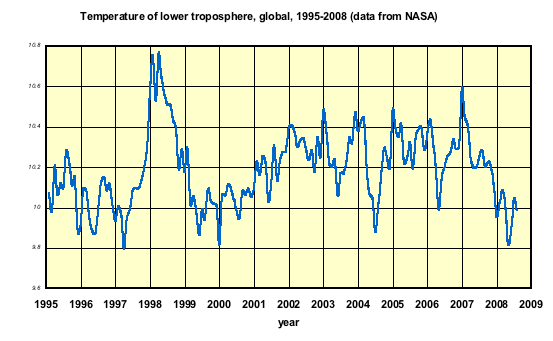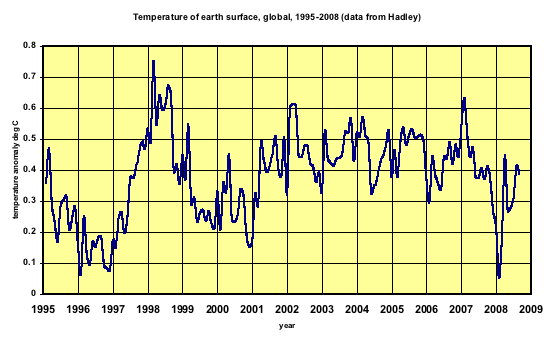

The recovery of the earth's climate from the little ice age started about 200 years ago, but the concentration of the atmospheric carbon dioxide started to increase significantly as late as in the 1950s, probably due to rapidly increased burning of fossil fuels.
The climate recovery is still an ongoing process today. A natural warming rate of roughly 0.5 deg C/100 years has been the baseline for more than 100 years, but both short (a few years) and long (20 years) fluctuations around the baseline have occurred for natural but highly speculative reasons, for example a rapid warming in the 1930s followed by a cooling period, and recently again warming until about 1998.
According to the UK climate panel IPCC, this last warming period has been forced by increased carbon dioxide concentration in the atmosphere. There is however no proof of that and the theory of how carbon dioxide influences the global mean temperature is complicated and unreliable. And if the global temperature again starts to increase slower than the natural long-term trend of 0.5 deg C/100 years, or even starts to cool, we can be quite certain that the recent faster warming trends have been natu-ral too.
It has been widely discussed if the satellite-derived global temperature measurements that show only little warming should be more reliable than the temperatures obtained on the ground that show more warming. But after 1995 both sources show about the same, (see graphs below drawn from Hadley-data (ground) and satellite data (NASA)).


A good reason to start a diagram from 1995 is that since that year no big (cooling) volcano eruptions have disturbed the temperature trend. Contrary to common belief, there has been no or little global warming since 1995 and this is shown by two completely independent datasets.
The curves look very normal and it seems probable that the natural recovery from the little ice age has went on without any significant decelerations or accelerations caused by human activity.
It is impossible to say what is going to happen in the future. But so far, real measurements give no ground for concern about a catastrophic future warming.